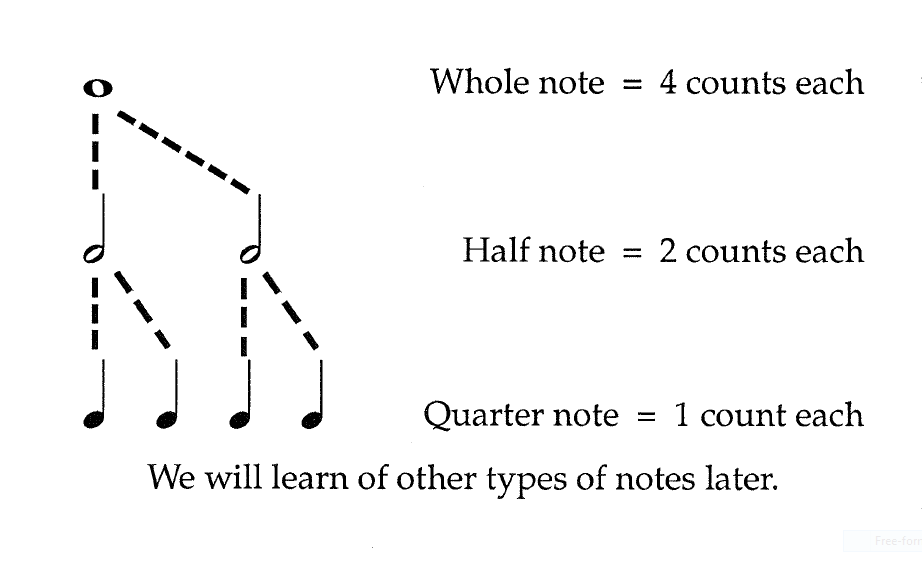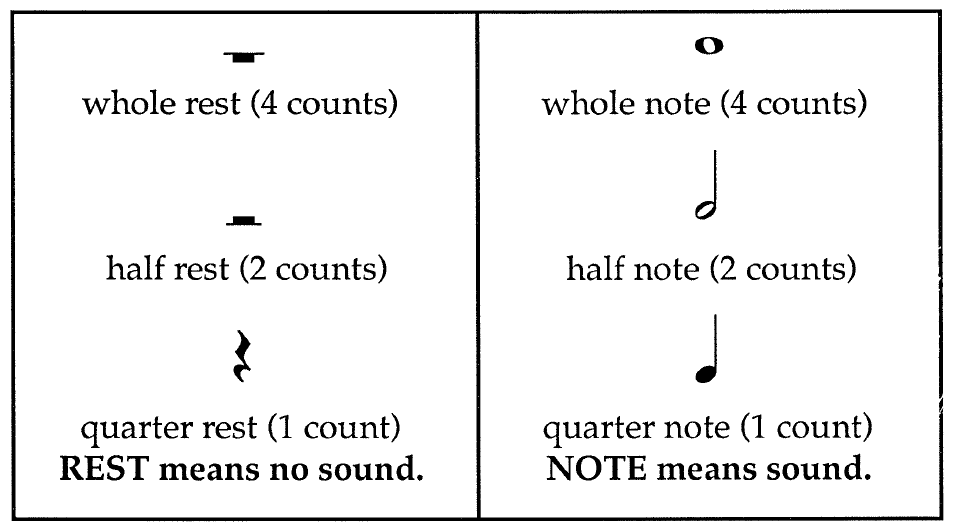Introduction to reading music notes
Music Notes - symbols, sounds & silenceIf reading music notes has been confusing – it doesn’t have to be.
Think of it as learning a language.
But, Instead of reading vowels, consonants and words – you are READING MUSIC NOTES.
- INFORMATION OVERLOAD. Too much stuff at once.
- MISUNDERSTANDING RHYTHM.
Rhythm is the most fundamental element of reading music notes. If you don’t get it right from the start, understanding music notation will always be a struggle.
That doesn’t have to happen.
break it down to the basics
Remember – keep it simple.
The only thing you need to know is reading music notes tells you
-
When to make a sound (Note)
-
When to be silent (Rest)
Challenge
- Music is sound.
- You can’t see sound.
- How do you put sound on paper?
Solution
- RHYTHM – Notate sound and silence.
- MELODY – Notate the tone/pitch of sound.
- HARMONY – Stack the tonal pitches into chords.
The key is to learn how to play notes “in time”.
![]()
Whole Note
Half Note
Quarter Note
Eighth Note
Timing is Everything
It is important to learn note values in the context of a steady beat.
With a steady beat, you feel/hear how the notes relate to each other.
Reading music notes should be learned “in time” from the very beginning – not as an afterthought.
A steady beat is the heartbeat of music. Without it, you can’t sing, perform or compose with any success.
The Math Always Makes Sense

Pro perspective
“If you don’t have the time, it’s very hard to make music out of it. So you should really focus on time and where notes fall.”
Reading Music Notes Is Like Counting Your Money
It requires some basic math.
Nothing too difficult like algebra or calculus – but just plain and simple arithmetic… basic stuff!


The Math Never Changes
A Whole can be divided into 2 Halves.
2 Halves can be divided into 4 quarters.
Without that, your money would never be consistent. And reading music notes wouldn’t make sense.
This is why…
2 + 2 ALWAYS = 4
Rests – When to be Silent
Whole Rest
Half Rest
Quarter Rest
Eighth Rest
Every note has an equivalent rest.
The math always works. You don’t have to guess.

Continue Reading
Learn More about the QUARTER NOTE – Trunk of the Rhythm Tree.
For information on the evolution of music notation, check out this history of music notation.




